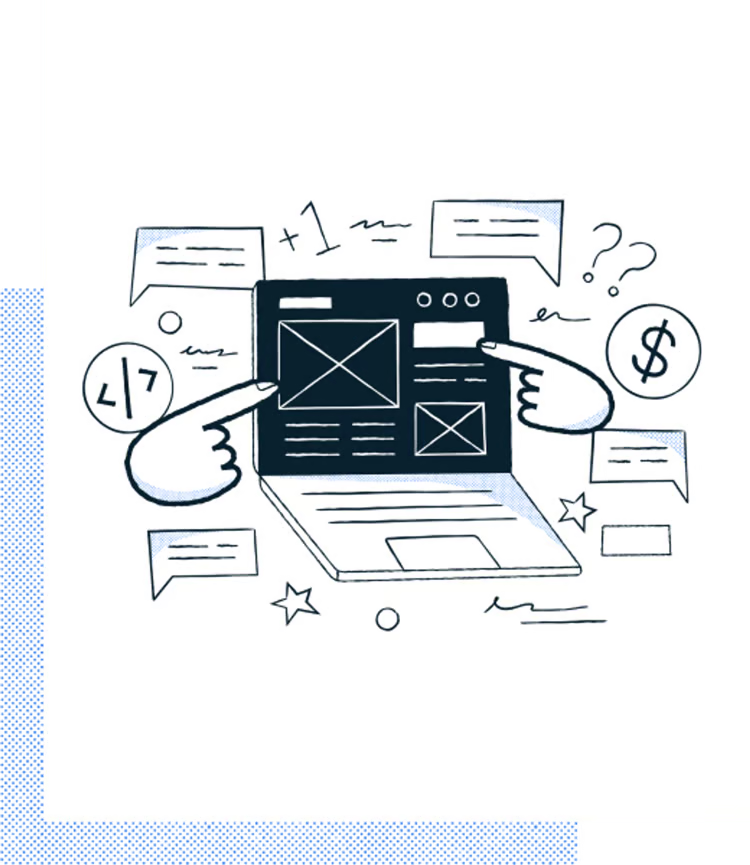Your cart is currently empty!

Designing for Impact: How Thoughtful UI/UX Enhances User Experience and Drives Engagement
User Interface (UI) and User Experience (UX) design are more than just buzzwords—they’re fundamental to creating websites, apps, and digital tools that captivate users and keep them engaged. Thoughtful UI/UX design not only enhances the user experience but also drives meaningful interactions, ensuring users return for more. Here’s how designing with impact can transform your digital platform:
1. Understanding the Difference Between UI and UX Design
To create impactful designs, it’s essential to understand the distinction:
- UI Design: Focuses on the aesthetics and visual elements of a digital product, such as typography, colors, and buttons.
- UX Design: Deals with the overall user journey and how intuitive and satisfying the experience feels.
Example: While UI ensures the “buy now” button looks attractive, UX ensures it’s placed logically within the user flow.
2. Putting the User First with Empathy-Driven Design
Empathy is at the heart of effective UI/UX design. Understanding users’ needs, pain points, and goals helps in crafting meaningful experiences:
- Conduct user research and surveys to identify problems.
- Create user personas to represent your target audience.
- Map user journeys to ensure a seamless flow from start to finish.
Pro Tip: Design for inclusivity by considering diverse user needs, including accessibility for those with disabilities.
3. Simplifying Navigation to Reduce Friction
A complex navigation system can frustrate users and drive them away. Thoughtful UI/UX design simplifies navigation by:
- Creating clear menus with logical categories.
- Including breadcrumbs to help users track their journey.
- Designing search functionality for easy content discovery.
Stat to Note: According to studies, 94% of first impressions relate to design, and ease of navigation is a top factor.
4. Designing for Visual Hierarchy
Visual hierarchy guides users to what’s most important on a page. Designers achieve this by:
- Prioritizing elements through size, color, and spacing.
- Using contrast to highlight key features like CTAs (calls to action).
- Grouping related elements to reduce cognitive load.
Example: On an eCommerce website, the “Add to Cart” button is often bold and brightly colored to grab attention.
5. Optimizing for Mobile-First Experiences
With the majority of users accessing content on mobile devices, designing for mobile-first is non-negotiable:
- Use responsive design to ensure layouts adapt to various screen sizes.
- Prioritize touch-friendly elements like buttons and gestures.
- Streamline content to avoid overwhelming small screens.
Pro Tip: Test designs on multiple devices to ensure consistency across platforms.
6. Enhancing Engagement with Microinteractions
Microinteractions are subtle animations or responses that add personality and improve the user experience:
- Highlight actions, such as a button changing color on hover.
- Provide feedback, like a vibration after submitting a form.
- Delight users with animations that bring the interface to life.
Example: A progress bar filling up as users complete a task keeps them motivated.
7. Using Consistent Design Systems
Consistency in UI/UX builds trust and improves usability by ensuring that:
- Visual elements, such as buttons and fonts, follow a cohesive style guide.
- Users can predict interactions, leading to a smoother experience.
- Brand identity remains strong across all digital touchpoints.
Design Tools to Consider: Figma, Sketch, and Adobe XD are popular for creating and maintaining design systems.
8. Leveraging the Power of Color Psychology
Colors evoke emotions and guide user behavior. Thoughtful use of color can:
- Create contrast to emphasize key actions.
- Evoke brand identity and mood (e.g., green for health or trust).
- Enhance readability with complementary backgrounds and text colors.
Example: Streaming platforms like Netflix use dark themes to reduce eye strain during long viewing sessions.
9. Streamlining Forms and Interactions
Forms are often a bottleneck for users. Thoughtful design reduces friction by:
- Minimizing the number of fields users need to fill.
- Using autofill features to save time.
- Breaking long forms into smaller, digestible steps.
Stat to Note: Simplifying forms can increase conversions by up to 160%.
10. Designing for Accessibility
Accessibility ensures that everyone, regardless of ability, can use your product. Key strategies include:
- Using high contrast for text and backgrounds.
- Adding alt text for images and screen reader compatibility.
- Designing keyboard-friendly navigation.
Outcome: Accessible design not only broadens your audience but also reflects positively on your brand.
11. Focusing on Speed and Performance
No matter how beautiful a design is, a slow website will frustrate users. Designers should:
- Optimize images and videos for faster loading times.
- Use asynchronous loading for background processes.
- Prioritize a lightweight design to ensure speed on all devices.
Pro Tip: A fast-loading site boosts both user satisfaction and search engine rankings.
12. Encouraging Trust with Transparency
Users engage with platforms they trust. Build trust through design by:
- Clearly labeling buttons and links to avoid confusion.
- Displaying security badges for payment gateways.
- Providing transparent policies for data usage and privacy.
Example: Including customer reviews and testimonials enhances credibility.
13. Testing and Iterating Designs
Design is an iterative process. To achieve optimal results:
- Conduct usability tests to identify pain points.
- Use heatmaps to analyze user behavior.
- Regularly refine the design based on user feedback.
Mindset Shift: Treat the UI/UX process as a living system, constantly evolving to meet user needs.
Conclusion
Thoughtful UI/UX design is the backbone of digital success. It prioritizes the user’s needs, eliminates friction, and creates memorable experiences that drive engagement. Whether you’re building an app, website, or digital tool, remember: great design is not just about how it looks but also about how it works. By investing in strategic UI/UX design, you’ll craft a digital platform that leaves a lasting impact.
Start designing with purpose—your users (and your business) will thank you!
